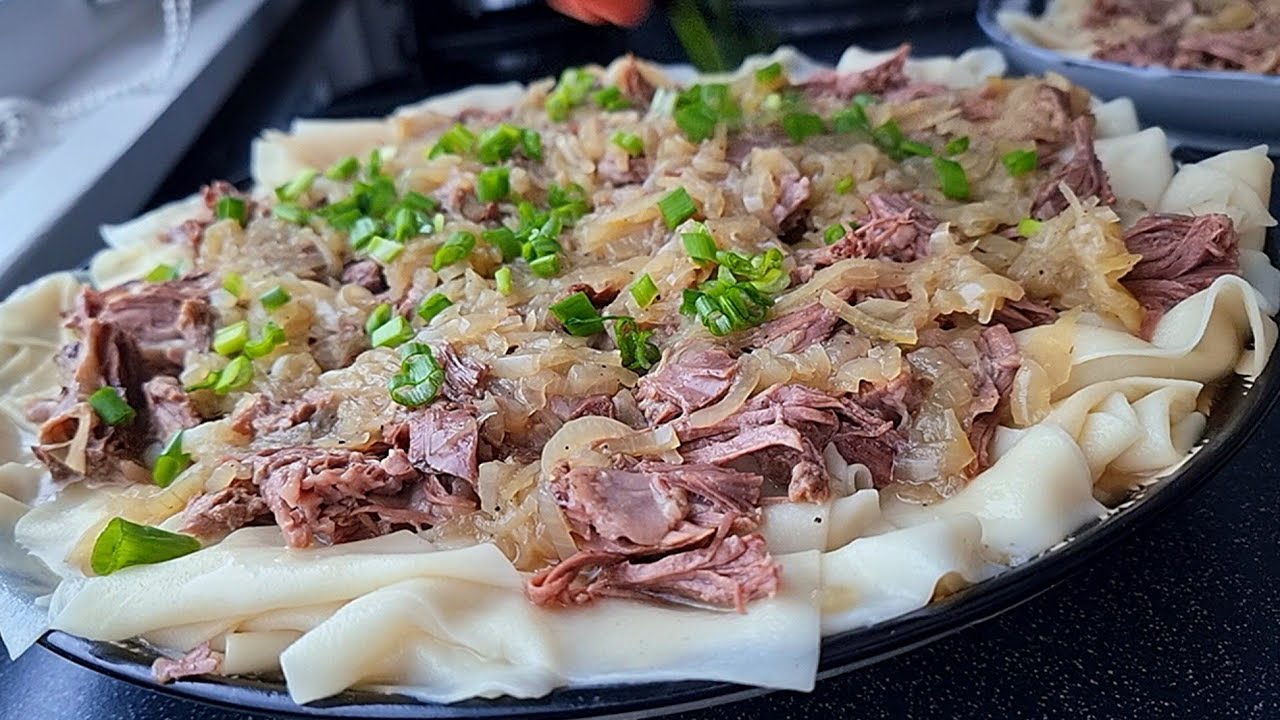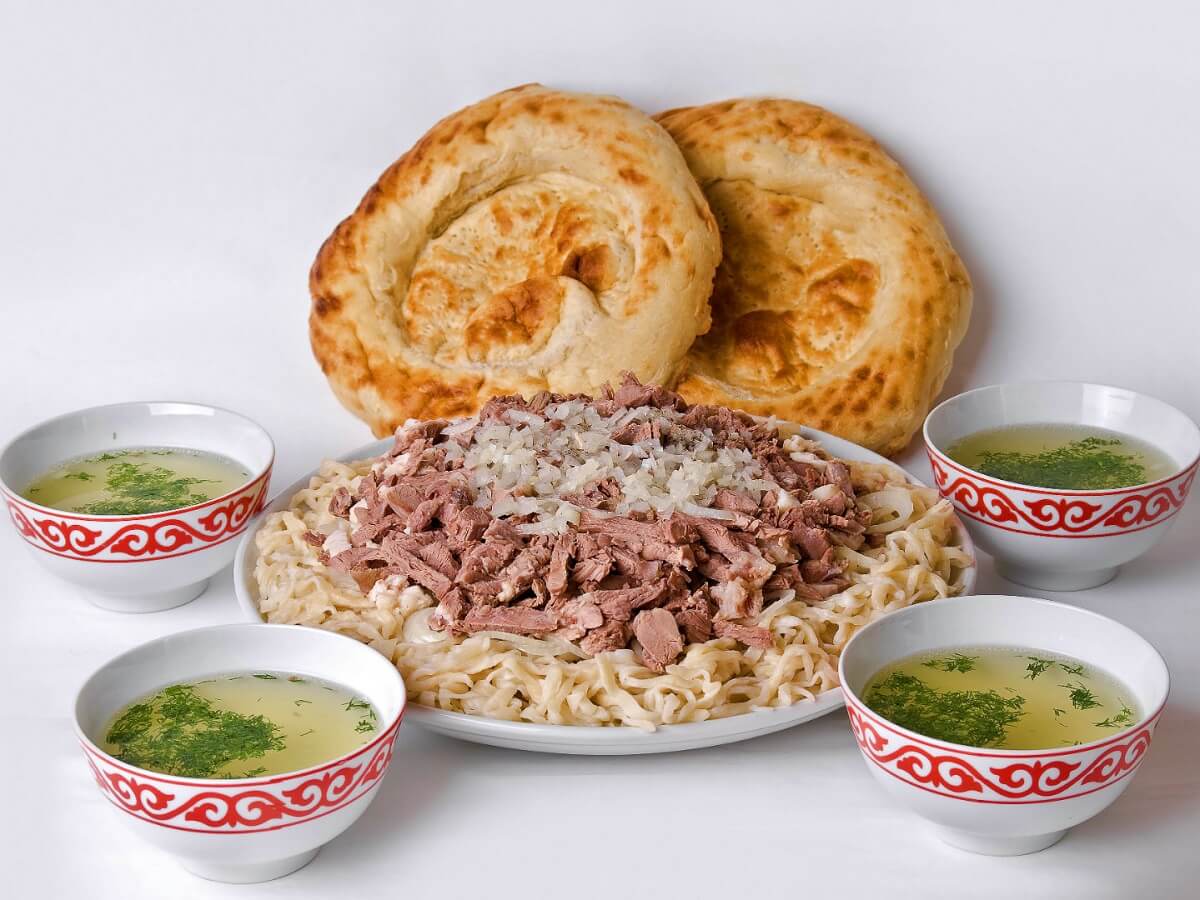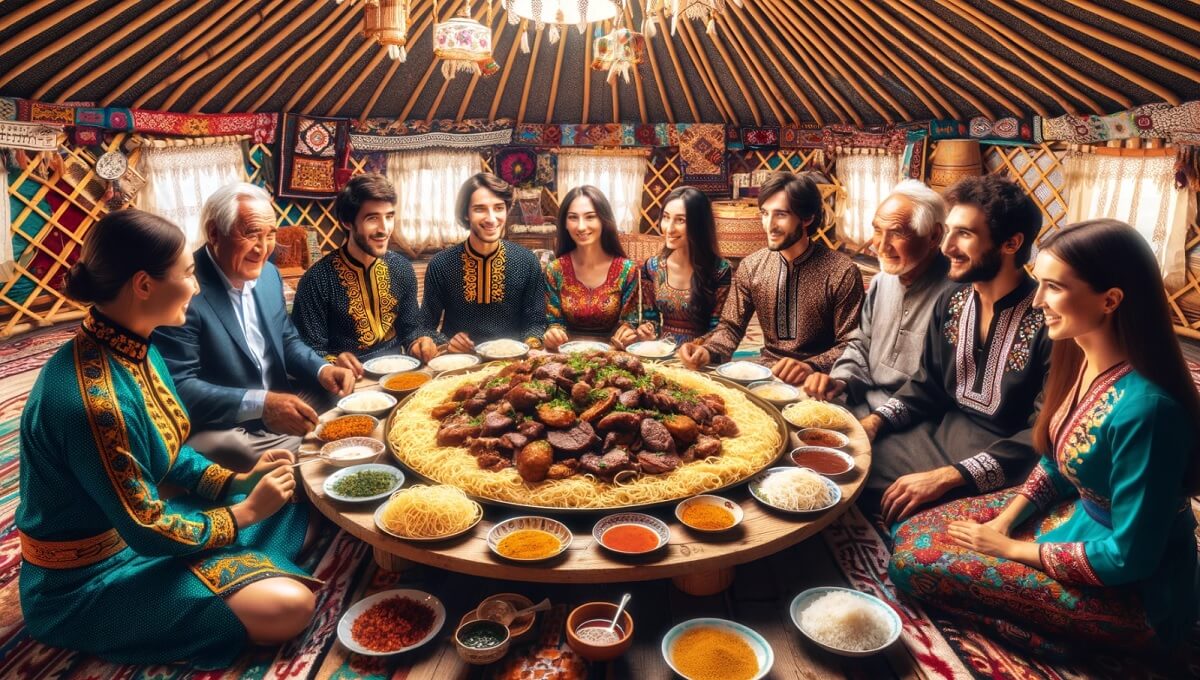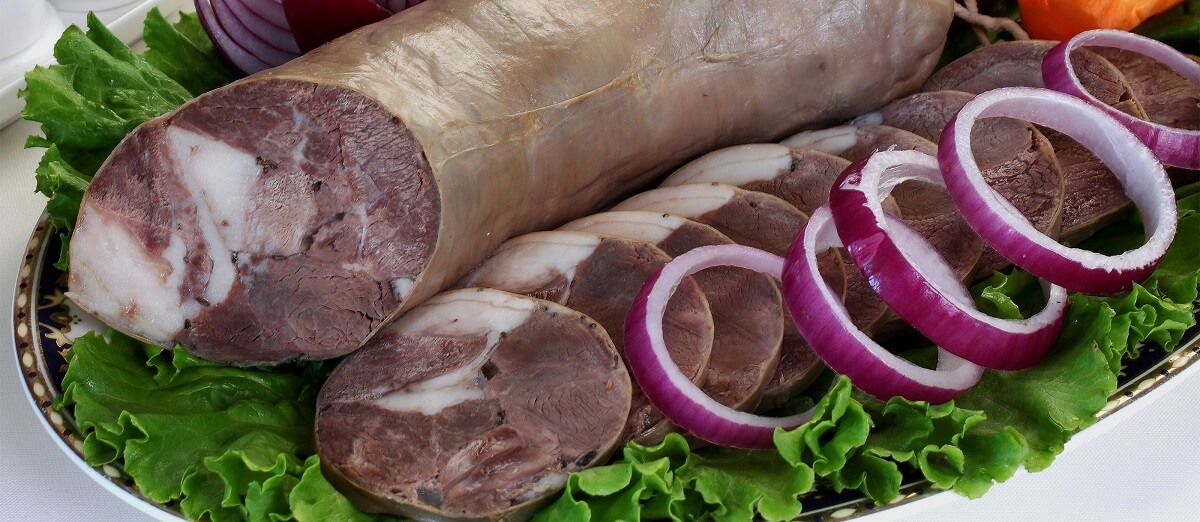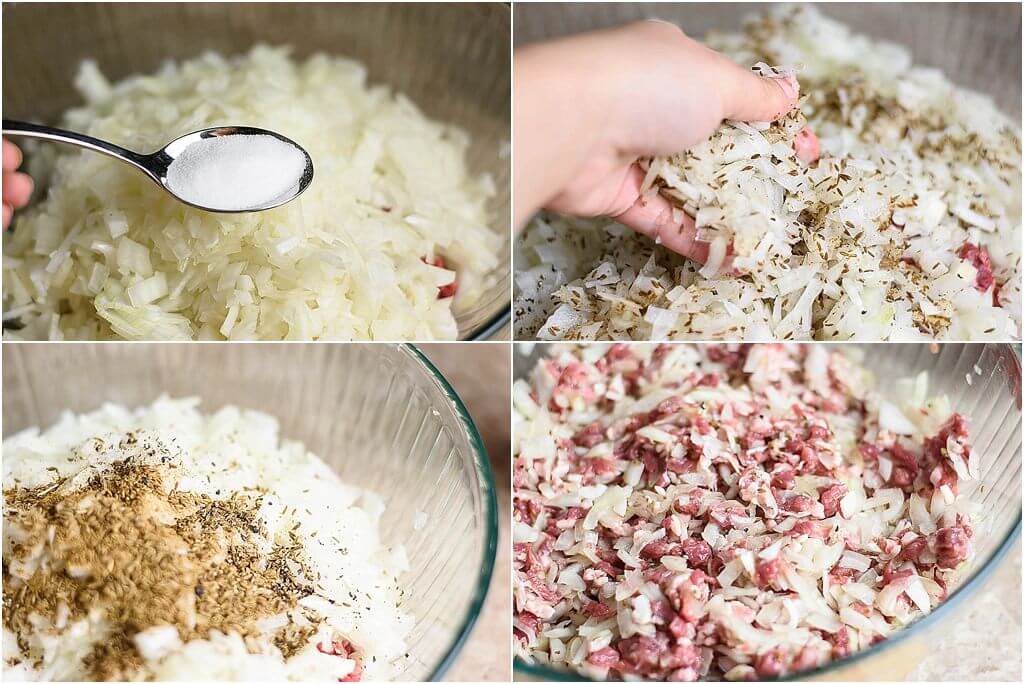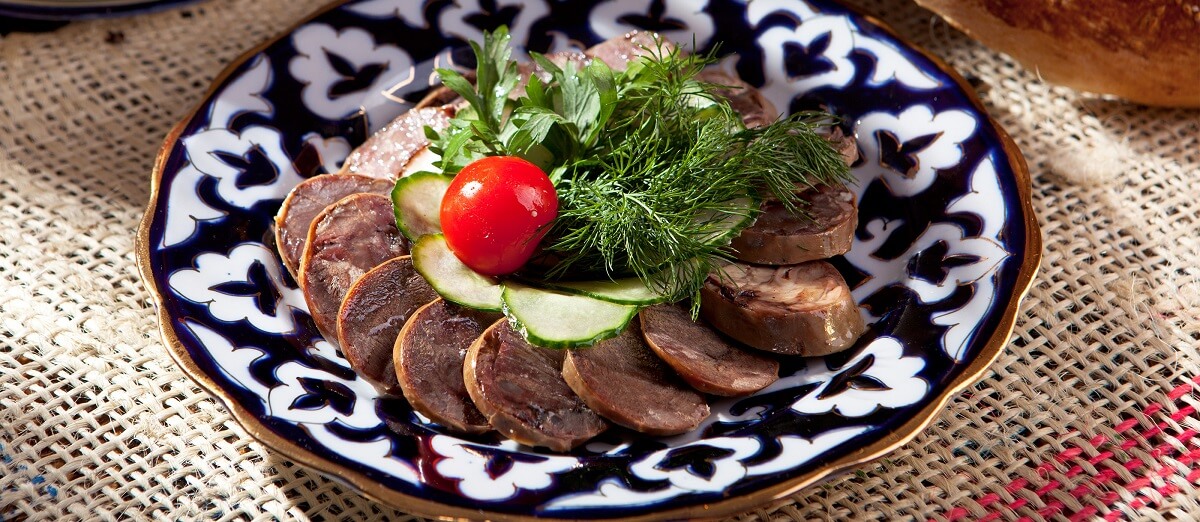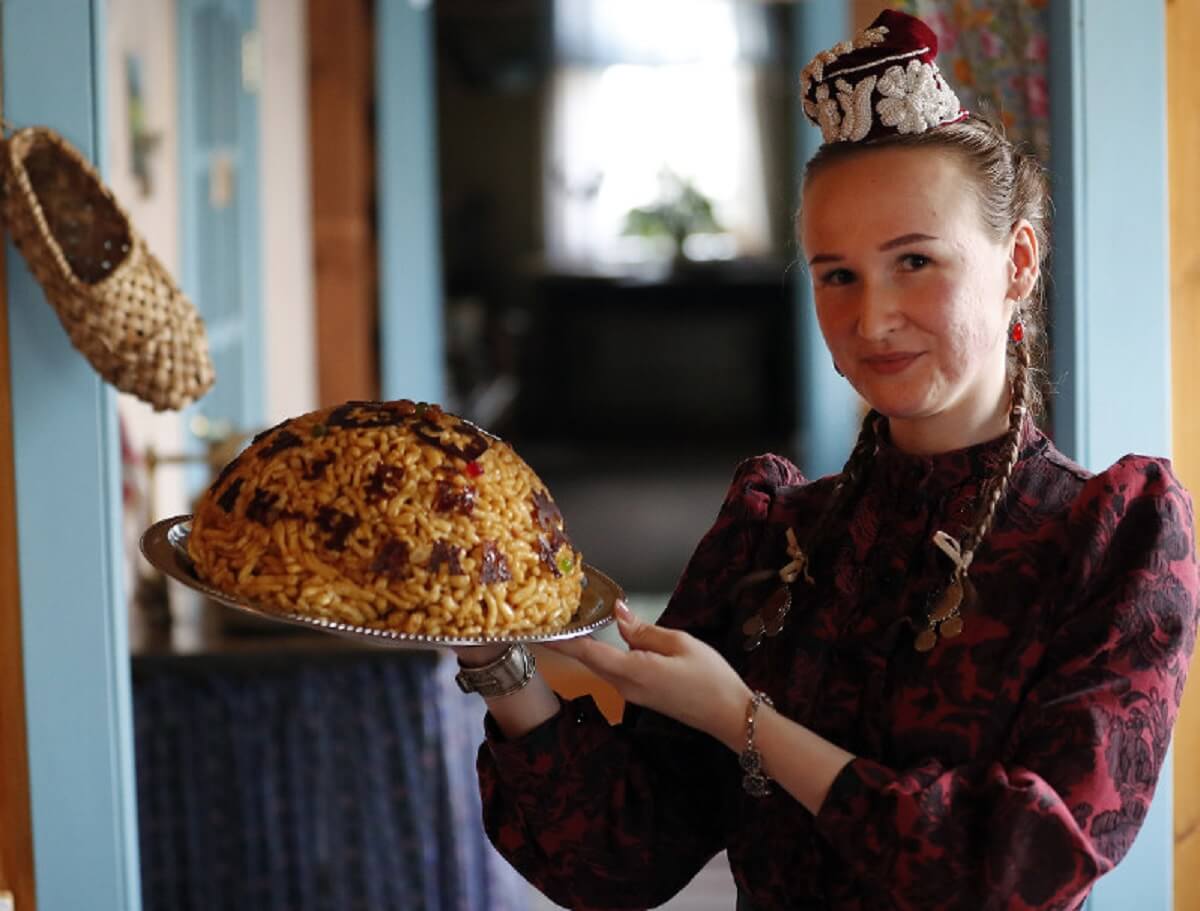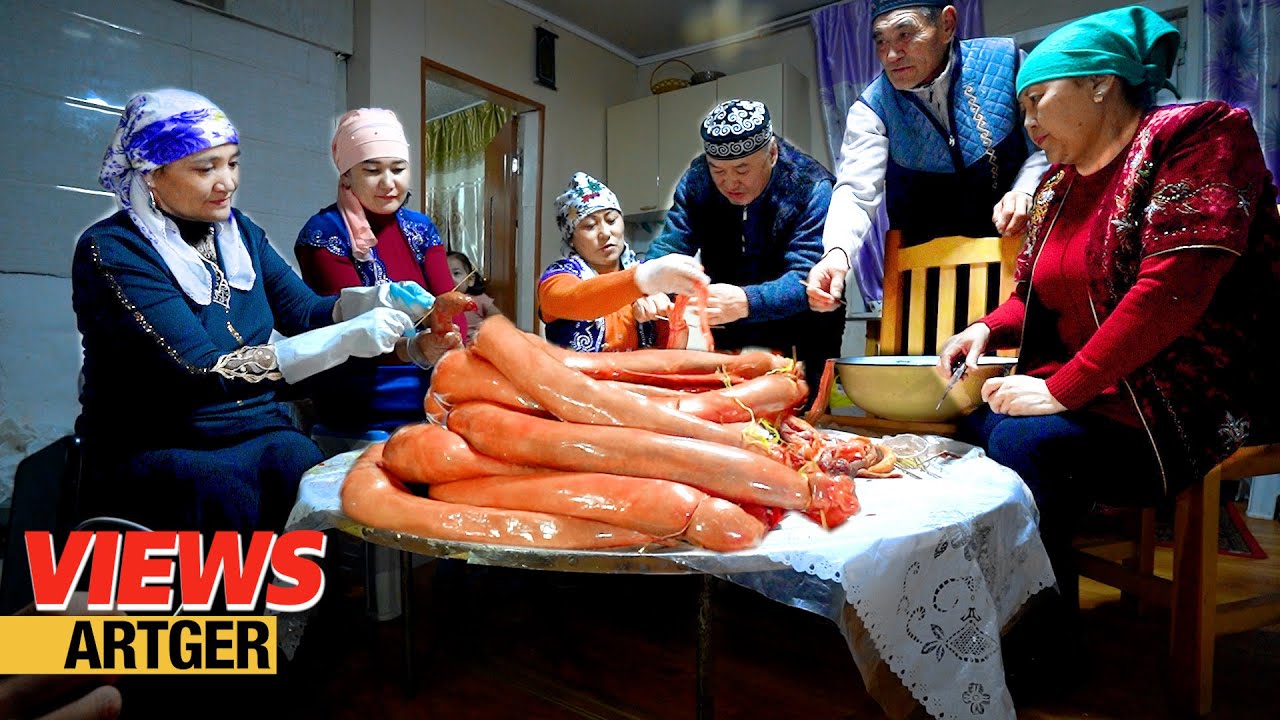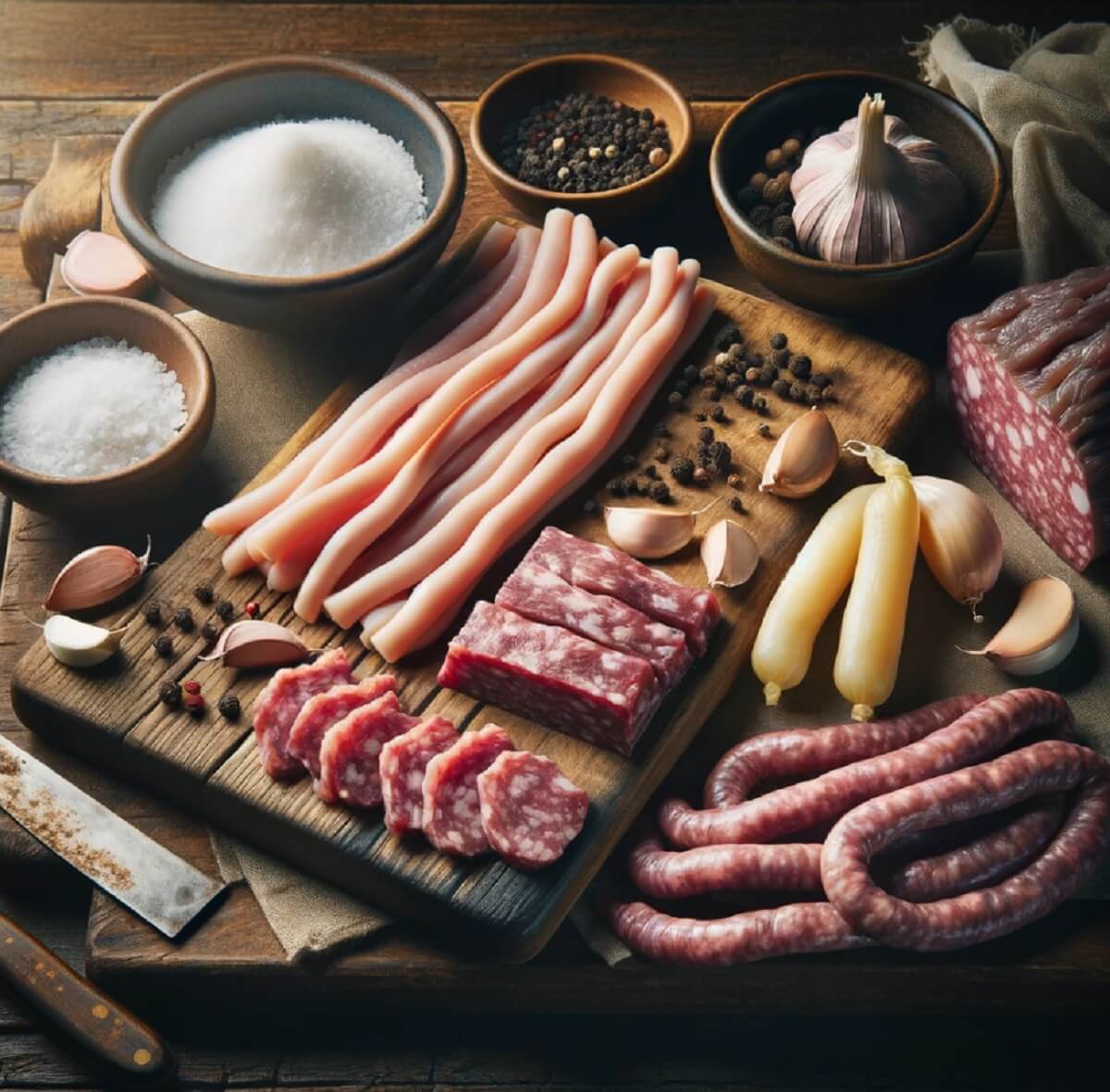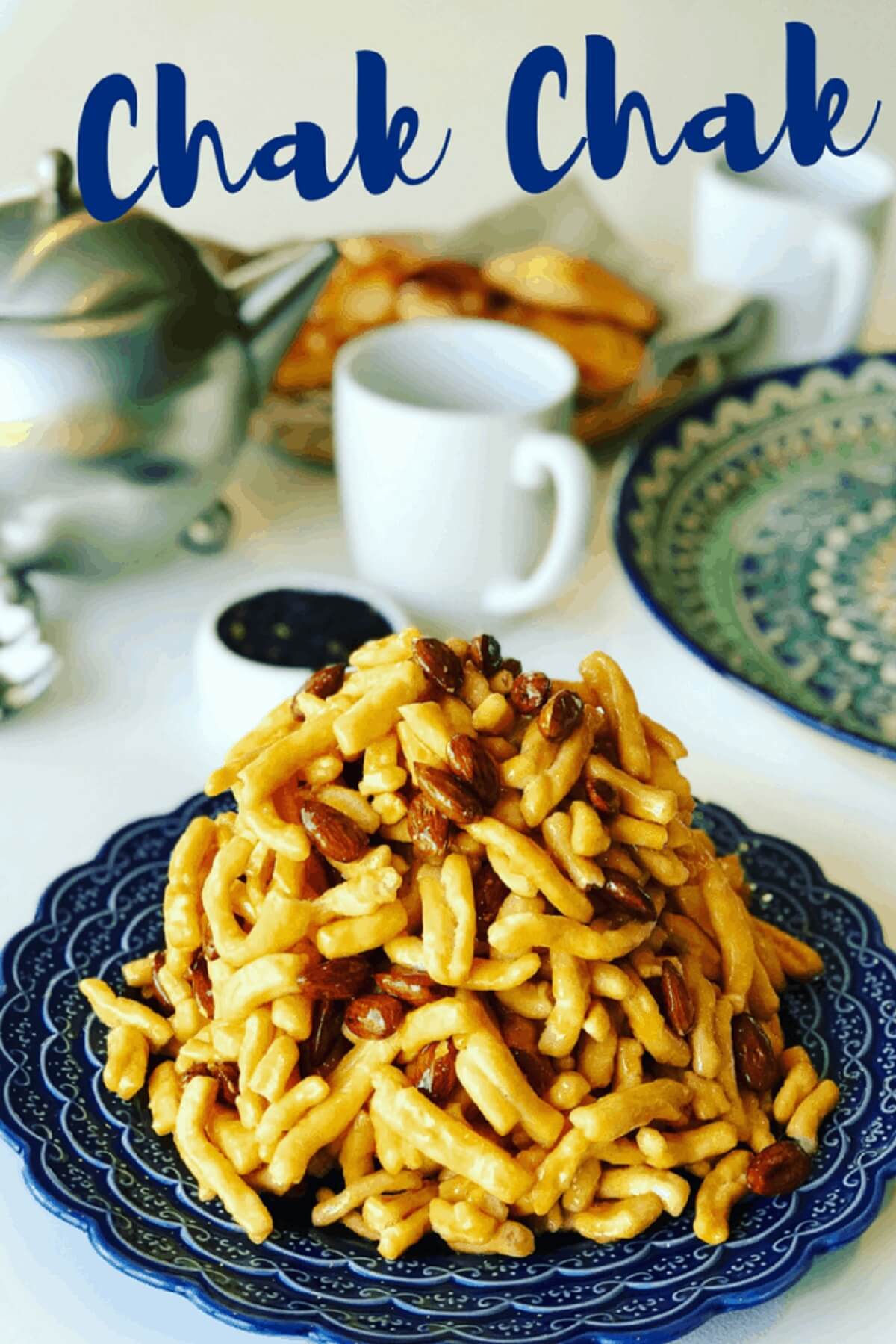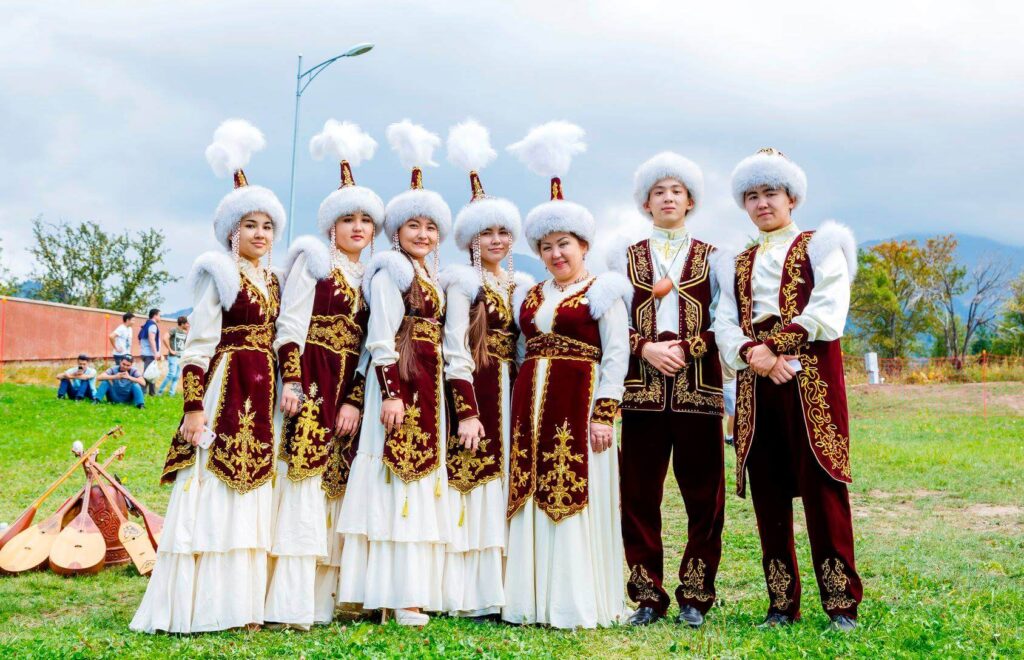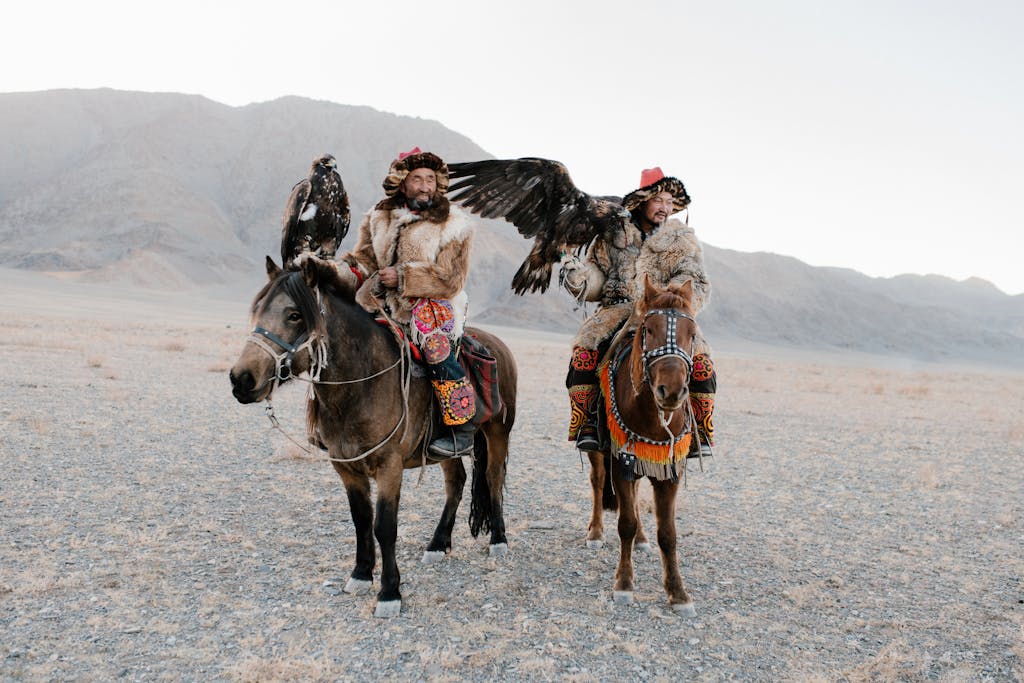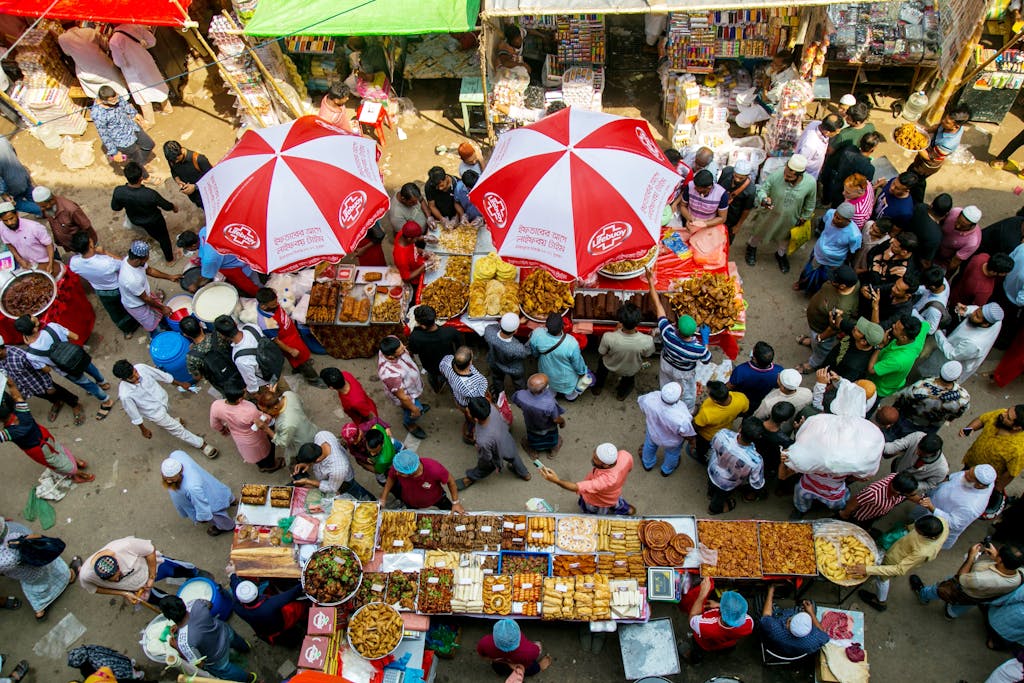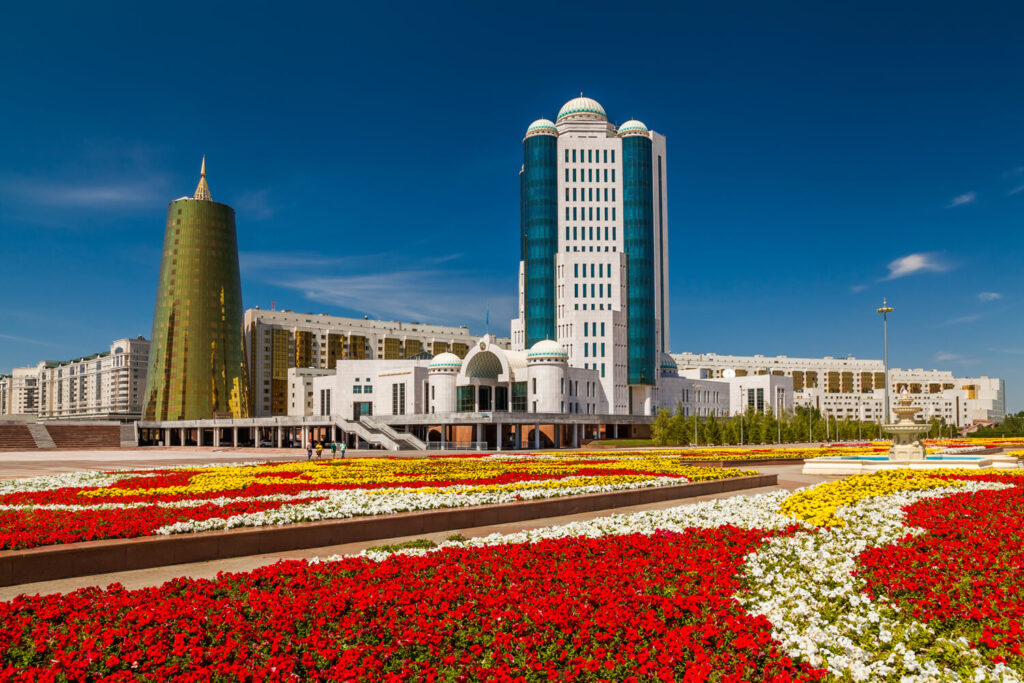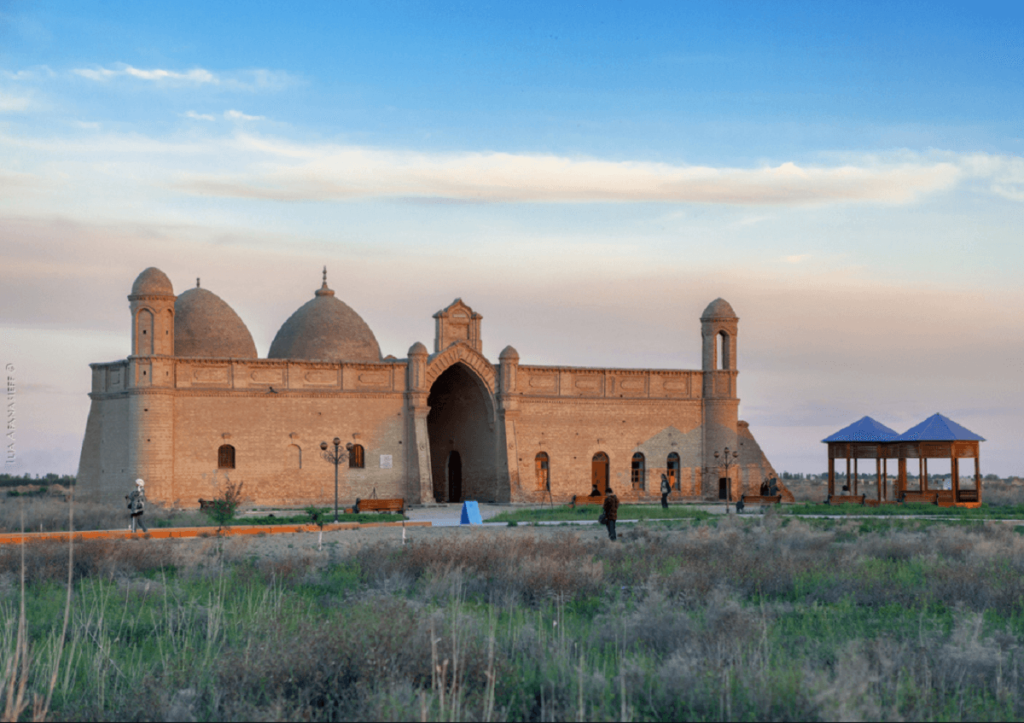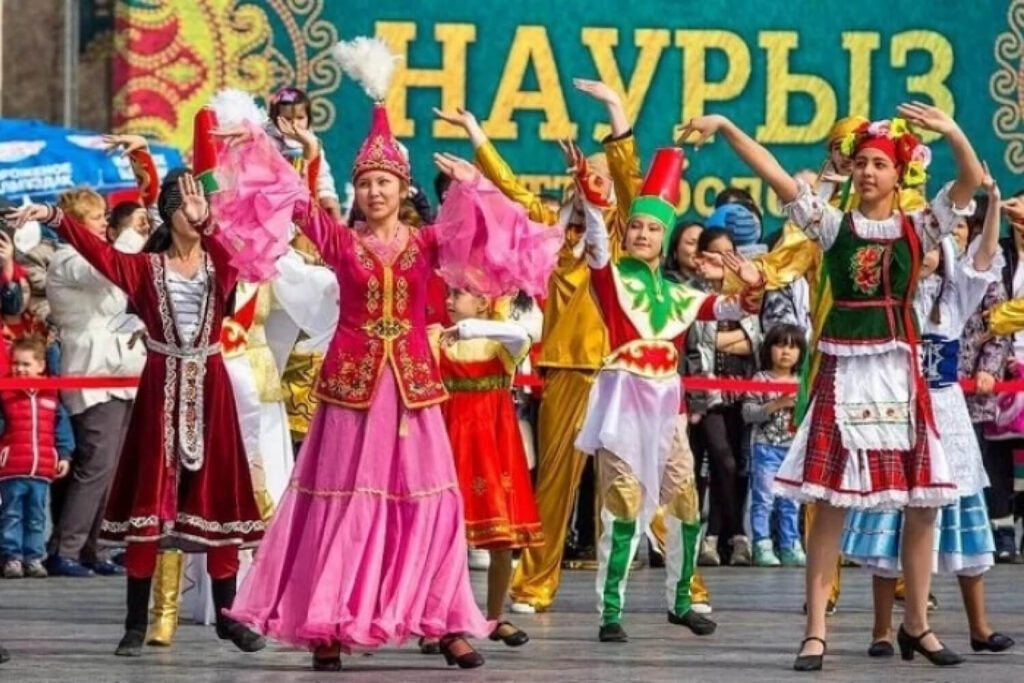Kazakh traditional food: Kazakh traditional cuisine is deeply rooted in the country’s nomadic heritage, focusing on hearty and practical foods that are rich in proteins and fats, derived from livestock that thrived in the steppes—primarily sheep, horses, and camels. Meals are simple but flavorful, and they emphasize the use of meat and dairy, which are central to the nomadic diet. Here’s a detailed description of some of Kazakhstan’s most iconic dishes:
Beshbarmak (Бешбармақ)
Translation: “Five fingers” (as it’s traditionally eaten by hand)
Description: Beshbarmak is the national dish of Kazakhstan, a staple at family gatherings and celebrations. It consists of boiled meat—usually horse meat, mutton (lamb), or beef—served on top of wide, flat noodles made from flour, water, and salt. After the meat is boiled, it’s chopped into small pieces and placed on the noodles. A broth called sorpa, made from the meat stock, is poured over the dish, adding moisture and rich flavor.
The process of making beshbarmak is ceremonial. The meal starts with preparing and serving the head of the animal, which is customarily given to the most respected guest, who carves it and distributes portions to others.
Discover Kazakhstan
Cultural Significance: Beshbarmak is more than just a meal; it symbolizes hospitality and respect. It’s typically served at special events such as weddings, funerals, or large family gatherings. Eating beshbarmak is a communal activity that brings families and communities together.
Kazy (Қазы)
Description: Kazy is a type of sausage made from horse meat, a delicacy in Kazakh cuisine. The meat is taken from the ribs of the horse, seasoned with salt, pepper, and garlic, and then stuffed into natural casings made from the intestines of the horse. Kazy can be air-dried or smoked and is usually served sliced thinly as an appetizer or side dish.
Cultural Significance: Kazy is a symbol of wealth and status in Kazakhstan. Horse meat has been a vital part of Kazakh culture for centuries, used not just for sustenance but also to showcase hospitality. Kazy is often served during celebrations, festivals, and to honor special guests.
Kurt (Құрт)
Description: Kurt is a traditional Kazakh snack made from dried sour milk. After the milk is curdled and the whey is separated, the curds are formed into small balls and heavily salted. These balls are then left to dry under the sun. The resulting product is dense, tangy, and salty, often served as a snack or paired with tea.
Discover Kazakhstan
Cultural Significance: Kurt is particularly popular among nomads for its long shelf life and portability. It’s nutrient-dense and doesn’t spoil easily, making it ideal for people who travel long distances or need food that can withstand harsh climates. It’s a nostalgic food for many Kazakhs, reminding them of their ancestors’ nomadic way of life.
Shubat (Шұбат)
Description: Shubat is fermented camel milk, known for its strong, sour taste. The fermentation process gives it a thick, yogurt-like consistency with a tangy flavor. It is often drunk cold and is believed to have numerous health benefits, including aiding digestion and boosting the immune system.
Cultural Significance: In the southern parts of Kazakhstan, where camels are more common, shubat is a staple drink. It was historically used to keep nomads hydrated and healthy during long travels, and it remains popular in rural areas. Shubat also holds cultural importance in traditional Kazakh medicine and is seen as a symbol of vitality.
Baursak (Баурсақ)
Description: Baursak is a fried dough snack, somewhat similar to a doughnut. It’s made by mixing flour, yeast, butter, milk, and sugar, then frying small balls or squares of dough until they become golden and fluffy. While they are often served plain, they can also be sprinkled with powdered sugar or served with honey for a sweet treat.
Discover Kazakhstan
Cultural Significance: Baursak is commonly served during holidays and special events, as well as during funerals or memorial services. They are also a popular accompaniment to tea and other meals, symbolizing abundance and community.
Kuyrdak (Қуырдақ)
Description: Kuyrdak is a hearty dish made from organ meats (such as liver, heart, lungs, and kidneys) that are fried together with onions, potatoes, and spices. The word “kuyrdak” comes from the Kazakh word for “roast” or “fried.” The dish is often made with freshly slaughtered animals and is served hot.
Cultural Significance: Kuyrdak is a traditional dish served immediately after the slaughter of an animal, using the most perishable parts first. It’s a food of survival but also of celebration, as slaughtering an animal is typically done during significant events or the start of winter preparations.
Manti (Манты)
Description: Manti are large, steamed dumplings filled with minced lamb or beef and onions. The dough is rolled thin and wrapped around the filling, then placed in a multi-tiered steamer (mantovarka). When cooked, the meat filling is juicy and flavorful. Manti are often served with sour cream or a vinegar-based sauce.
Cultural Significance: Manti is a favorite dish for family meals, and its preparation is often communal, bringing people together to fold and steam the dumplings. Manti is also popular across Central Asia, but in Kazakhstan, it’s particularly associated with home cooking and hospitality.
Zhaya (Жая)
Description: Zhaya is a type of air-dried horse meat, similar to beef jerky but usually made from the hindquarters of a horse. The meat is seasoned with salt and left to cure in the open air. Once dried, it is thinly sliced and served as an appetizer.
Discover Kazakhstan
Cultural Significance: Zhaya, like kazy, is considered a delicacy and a symbol of respect and hospitality. It’s often served to guests during festive meals or on special occasions. Its preservation method reflects the nomadic lifestyle, where meat needed to be stored for long periods.
Samsa (Самса)
Description: Samsa is a baked pastry filled with minced meat (typically lamb or beef), onions, and sometimes potatoes or pumpkin. The pastry has a flaky, buttery crust, and the filling is spiced with black pepper, cumin, and sometimes other spices. Traditionally, samsa is baked in a tandoor oven, which gives it a crisp exterior.
Cultural Significance: Samsa is popular across Central Asia and can be found at street vendors throughout Kazakhstan. It’s often eaten as a quick snack or part of a larger meal and reflects the influence of the Silk Road, which brought various cooking techniques to the region.
Chal (Шал)
Description: Chal is fermented mare’s milk, similar to shubat but made from horse milk instead of camel milk. Chal has a fizzy texture due to natural fermentation and a tangy, sour taste. It’s a rich source of probiotics and is often consumed cold.
Cultural Significance: Chal, like shubat, has long been valued for its supposed medicinal qualities. It was essential for nomads who depended on their horses not just for transportation but also for sustenance. Chal is considered a staple of Kazakh hospitality, particularly in rural areas.
Overview of Kazakh Culinary Traditions
Kazakh food reflects the country’s history of nomadism, with dishes designed to be nourishing, easy to prepare, and preservable for long periods. Meals are communal, and sharing food is a central aspect of Kazakh hospitality. Meat, particularly horse and lamb, plays a significant role in most meals, and dairy products are highly prized. Many dishes are slow-cooked or preserved, showing the influence of the harsh steppe environment on the food. The cuisine is not overly spiced, relying on the natural flavors of the ingredients to shine through.

